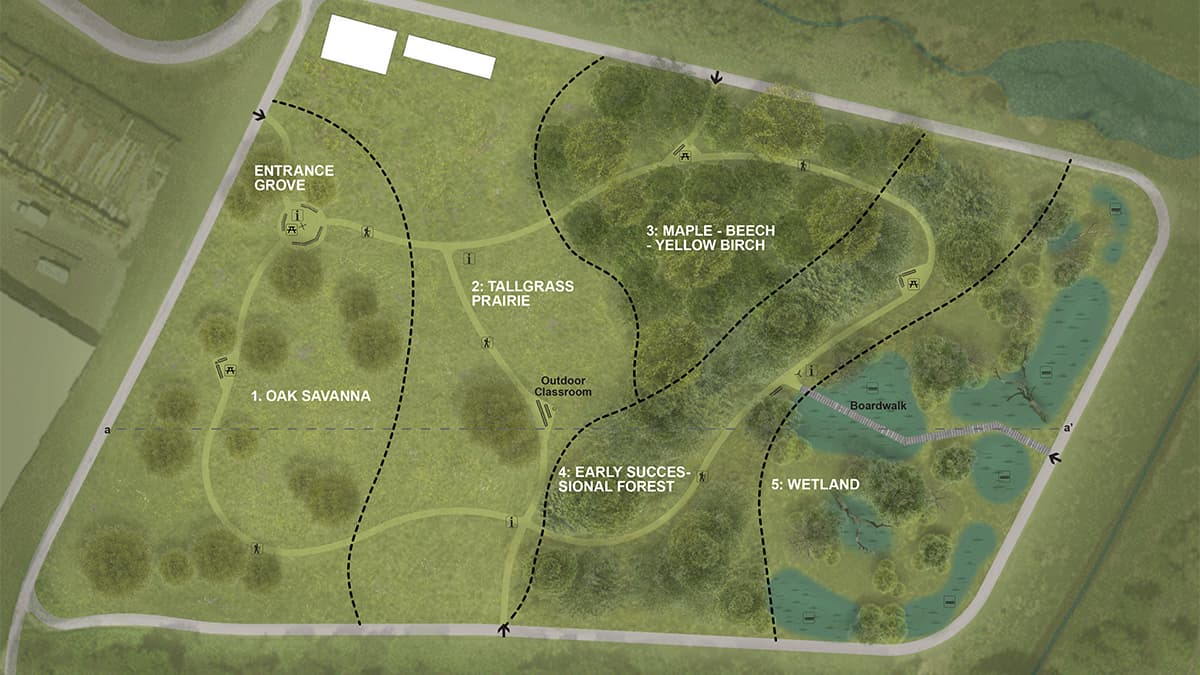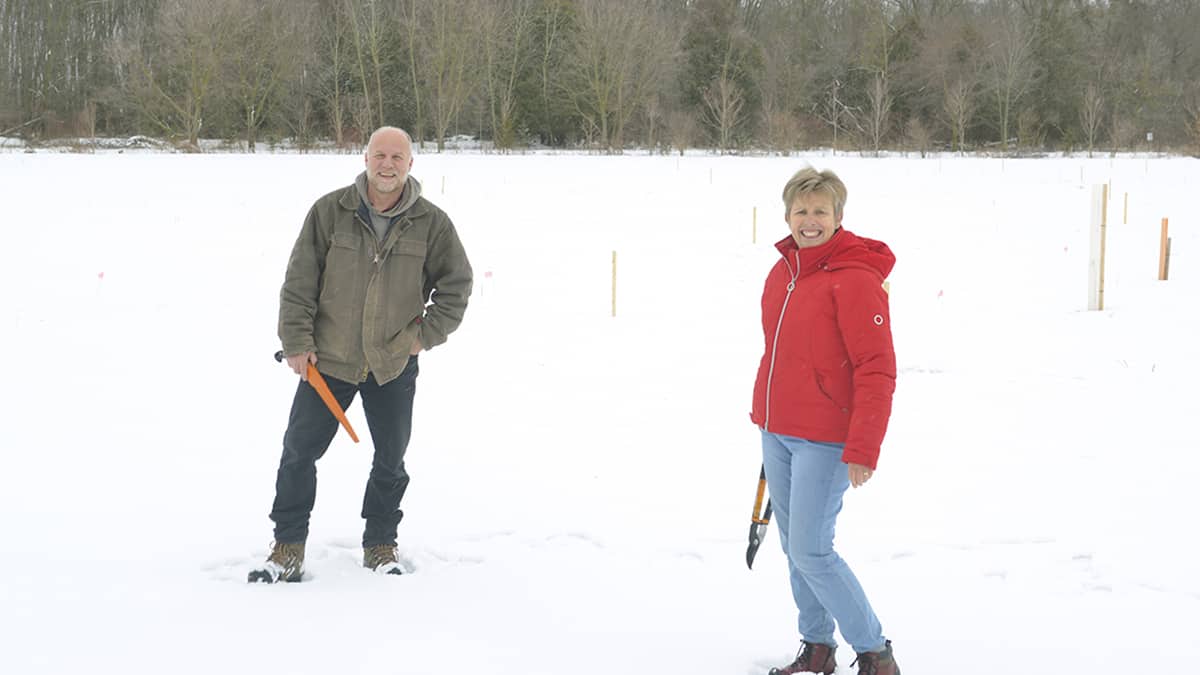When Trees for Woolwich began the mission was simple: plant a tree for every person in the township. Almost 10 years later they have surpassed their original goal planting more than 34,000 trees. The group has also become the gold standard in the area for tree planting as they host multiple events each year.
Now, Trees for Woolwich has opted to take on a new goal as they look to the future of conservation for generations to come, part of a bid to expand the tree coverage to 30 per cent of Woolwich’s area.

The group’s newest community project, dubbed The Habitats, is set to turn a six-acre field into a showcase for different habitats and tree species native to the region. Made up of 1,200 trees and 36 different species – some of which are almost extinct – the area will be comprised of five different habitats that can be found within southern Ontario.
Habitats included in the project are tall grass prairie, oak savannah, maple beech forest, early succession forest and wetland. Also included will be an outdoor education site for young students to visit.
What inspired Mark Schwarz of Earthscape to push the project forward was restoring different ecosystems, some of which are almost non-existent in Ontario.
“Instead of just planting trees, we’re restoring specific ecosystem. That’s, I think, what’s key here, different from what we’ve done previously,” said Schwarz. “For instance, the oak savannah, it’s like a prairie with sporadic oaks, so it’s like a defined ecosystem. But it’s been eliminated almost completely from Ontario. So, that ecosystem is down to half a per cent of the coverage it used to have historically. What that means is that when we restore that type of ecosystem we’re bringing back insects, amphibians, birds [species which have seen] their homeland has been almost eliminated. So, it’s not just the plants and trees – we’re bringing the whole community of life that would be associated with that specific type of ecosystem.”
Schwarz says it is expected to take three years to complete, with the hardest part of the work already completed last fall.
The entire project is expected to cost about $70,000, with funds being raised by corporate and individual donations. Thus far, about $28,000 has been raised, Trees for Woolwich chair Inga Rinne told Woolwich councillors Tuesday night.
Rinne says there are three goals to come out of this project, including simply creating a much-needed green space.
“I think it’s a number of different goals that we have. One of them is plain and simple to provide another green outdoor recreation opportunity for people. I think COVID has brought home to us like never before how important it is for people to have access to green space. So that’s the one sort of simplest of goals. The second, obviously, is to align with the goal of increasing the tree cover in our community. And the third is to create an awareness in people of the diverse kinds of habitats that exist in our area and some of the creatures that are supported by those different habitats,” said Rinne.
While the project has technically started, including last fall’s planting of prairie grasses, the official kickoff will be held this spring.
Rinne said she hopes to make this a community project where people young and old will come out to not only help with the planting of these species, but also help with the maintenance and upkeep. From watering to weed control and even trail maintenance, Rinne looks to see people from all walks of life bring their skills and love of nature out to help complete the project that will leave a lasting legacy in Elmira.
Over 40 years, The Habitats could divert some 1,170 tonnes of carbon, she said in a presentation to council, which voted to endorse its previous support for the 30-per-cent coverage level for the tree canopy, which would almost double current levels.









